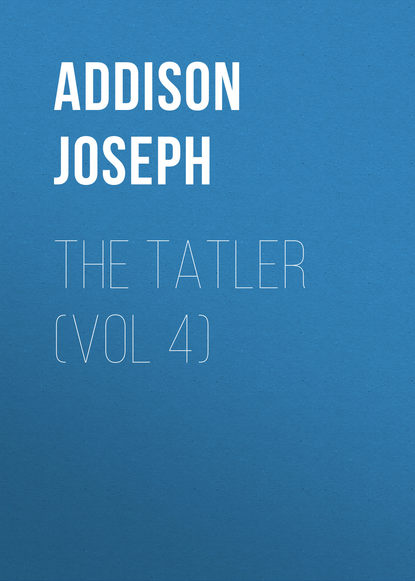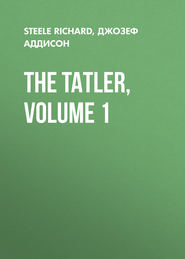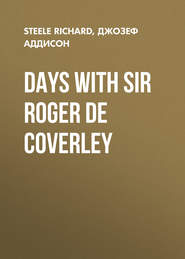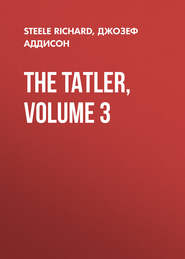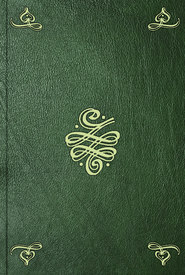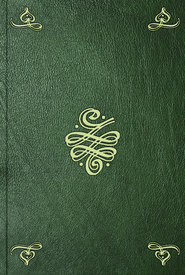По всем вопросам обращайтесь на: info@litportal.ru
(©) 2003-2024.
✖
The Tatler (Vol 4)
Настройки чтения
Размер шрифта
Высота строк
Поля
Best judge of men, and best of poets too."
58
See No. 18.
59
Jerome Cardan (1501-1576), physician and astrologer (see Professor Henry Morley's "Life of Girolamo Cardano," 1854).
60
Virgil, "Æneid," vi. 103.
61
This mode, which originated in the reign of King Charles II., is shown in Sir Peter Lely's ladies; but Walpole says that Vandyck's habits are those of the times, but Lely's are fantastic dresses. The prevalence and dislike of this fashion occasioned in 1678 the publication of a book translated from the French by Edward Cooke, under the following title, "A Just and Reasonable Reprehension of Naked Breasts and Shoulders, written by a grave and learned Papist."
Half a century after the Tatler, the "moulting of their clothes" by ladies was again the subject of comment by the moral essayist. There are several papers on the subject in the World (Nos. 6, 21, 169, &c.), in which it is remarked that it was the fashion to undress to go abroad, and to dress when at home and not seeing company.
62
See No. 221.
63
See No. 50.
64
The tucker "ran in a small kind of ruffle round the uppermost verge of the woman's stays, and by that means covered a great part of the shoulders and bosom" (Guardian, No. 100). A tendency to abandon the use of the tucker was the subject of Addison's satire (ibid., No. 109).
65
"Paradise Lost," ix. 1187.
66
"The Tatler, in his last, promises us that as the town fills he will be wittier. I am sorry, for his sake, it has been empty so long. I believe he will be shortly as good as his word, for his friends, I hear, are coming from Ireland. I expect, too, some of my friends from the same country; and as he is to be new-rigged out for a wit, so I don't question but that there will from thence, too, come fresh materials for an Examiner." (Examiner, No. 5.)
67
Grass mown and spread for drying.
68
"Paradise Lost," ix. 445.
69
Sir Isaac Newton.
70
Nichols suggested that Addison was really the author of this paper. This theory is supported by the fact that in No. 221 an error in the motto of this paper was corrected, a matter with respect to which Addison was much more careful than Steele. The suggestion that Tickell was the original of Tom Mercett is untenable, especially if Addison was the writer.
71
See No. 217.
72
The "Annotations on the Tatler," &c. (see No. 5).
73
See No. 214.
74
The Rainbow Tavern, by the Inner Temple Gate, Fleet Street, was established as a coffee-house by James Farr, a barber, in or before 1657.
75
This paper has been attributed to Addison, though not included in his works, because it is a sequel to No. 216, and because of the corrections in the following number of the folio issue. These corrections consist of "immersions" for "emersions," and instructions to omit "immediately" in a passage where the word occurred twice in a short space. Steele was not in the habit of noticing these small points.
76
See No. 216.
77
A bargain. Dryden (translation of Juvenal) wrote, "He had no mighty pennyworth of his prayer."
78
No. 217
79
This paper is ascribed to Addison by Nichols, because of the corrections – five in number – in the following number of the folio issue.
80
John Banister (died 1735) was the son of a composer and violinist of the same name. He played in the royal band, and was first violin at Drury Lane Theatre when Italian operas were introduced into this country.
81
Horace, 1 Od. xxv. 8.
58
See No. 18.
59
Jerome Cardan (1501-1576), physician and astrologer (see Professor Henry Morley's "Life of Girolamo Cardano," 1854).
60
Virgil, "Æneid," vi. 103.
61
This mode, which originated in the reign of King Charles II., is shown in Sir Peter Lely's ladies; but Walpole says that Vandyck's habits are those of the times, but Lely's are fantastic dresses. The prevalence and dislike of this fashion occasioned in 1678 the publication of a book translated from the French by Edward Cooke, under the following title, "A Just and Reasonable Reprehension of Naked Breasts and Shoulders, written by a grave and learned Papist."
Half a century after the Tatler, the "moulting of their clothes" by ladies was again the subject of comment by the moral essayist. There are several papers on the subject in the World (Nos. 6, 21, 169, &c.), in which it is remarked that it was the fashion to undress to go abroad, and to dress when at home and not seeing company.
62
See No. 221.
63
See No. 50.
64
The tucker "ran in a small kind of ruffle round the uppermost verge of the woman's stays, and by that means covered a great part of the shoulders and bosom" (Guardian, No. 100). A tendency to abandon the use of the tucker was the subject of Addison's satire (ibid., No. 109).
65
"Paradise Lost," ix. 1187.
66
"The Tatler, in his last, promises us that as the town fills he will be wittier. I am sorry, for his sake, it has been empty so long. I believe he will be shortly as good as his word, for his friends, I hear, are coming from Ireland. I expect, too, some of my friends from the same country; and as he is to be new-rigged out for a wit, so I don't question but that there will from thence, too, come fresh materials for an Examiner." (Examiner, No. 5.)
67
Grass mown and spread for drying.
68
"Paradise Lost," ix. 445.
69
Sir Isaac Newton.
70
Nichols suggested that Addison was really the author of this paper. This theory is supported by the fact that in No. 221 an error in the motto of this paper was corrected, a matter with respect to which Addison was much more careful than Steele. The suggestion that Tickell was the original of Tom Mercett is untenable, especially if Addison was the writer.
71
See No. 217.
72
The "Annotations on the Tatler," &c. (see No. 5).
73
See No. 214.
74
The Rainbow Tavern, by the Inner Temple Gate, Fleet Street, was established as a coffee-house by James Farr, a barber, in or before 1657.
75
This paper has been attributed to Addison, though not included in his works, because it is a sequel to No. 216, and because of the corrections in the following number of the folio issue. These corrections consist of "immersions" for "emersions," and instructions to omit "immediately" in a passage where the word occurred twice in a short space. Steele was not in the habit of noticing these small points.
76
See No. 216.
77
A bargain. Dryden (translation of Juvenal) wrote, "He had no mighty pennyworth of his prayer."
78
No. 217
79
This paper is ascribed to Addison by Nichols, because of the corrections – five in number – in the following number of the folio issue.
80
John Banister (died 1735) was the son of a composer and violinist of the same name. He played in the royal band, and was first violin at Drury Lane Theatre when Italian operas were introduced into this country.
81
Horace, 1 Od. xxv. 8.





